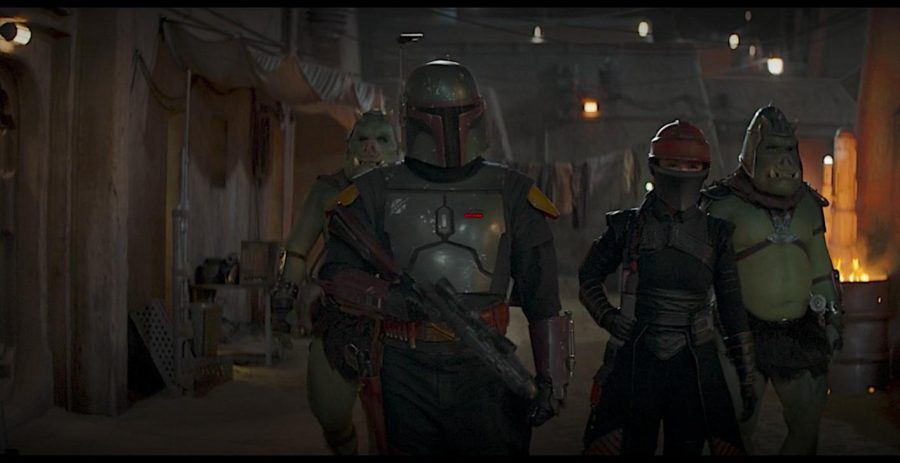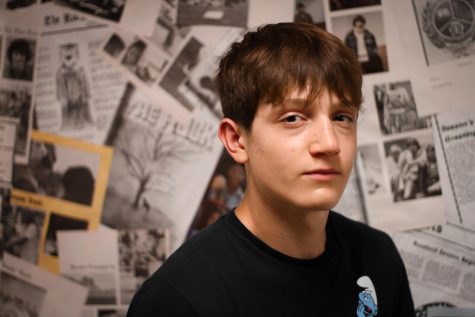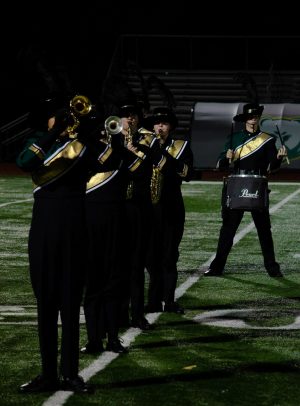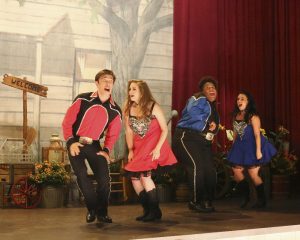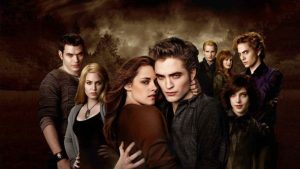‘The Book of Boba Fett’ embodies long-awaited answers to wishes for the Star Wars universe.
January 13, 2022
Boba Fett (Temuera Morrison) is one of the most iconic characters in the Star Wars universe, characterized by his green medieval-inspired helm and armor, and telltale ruthless bounty hunter-esque attitude. Having only three lines of dialogue throughout the original Star Wars trilogy (first appearing in “The Empire Strikes Back” and then again in “Return of the Jedi”), Boba didn’t really provide audiences with perspective and was liked strictly because of his mysterious nature. Boba’s only appearance outside of the trilogy prior to 2021 was in “The Attack of the Clones” (2002) as a child living in the shadow of his father, Jango Fett. Following Fett’s story timeline as a character, however, his presumably last moments on screen were as he is seen on the desert planet Tatooine, being consumed by an alien after a faulty jetpack launch.
Fans can now experience the reappearance of their beloved Boba Fett in the Disney+ original series, “The Book of Boba Fett.” The series follows his continued story directly after “Return of the Jedi”, and ascent into power as “daimyo” over the region of Mos Espa, taking the throne of his former employer, Jabba the Hutt. The show maintains the western setting and ideas included in the acclaimed “The Mandalorian” Disney+ series, staying true to the preferences of the fans.
The first episode of the series, titled “Chapter 1,” shows Fett in his attempt to become acclimated to his standing as ruler of the region alongside his partner, Fennec Shand (Ming-Na Wen), and new way of regulation. His leadership style differs greatly from Jabba, who ruled with an iron fist. One of the main themes is the conflict in Boba Fett between the need to impose dominance in order to maintain rule, while also showing acceptance of the people and mercy toward associates.
The episode’s storytelling switches from sequences of Boba Fett’s dreams of the past when he sleeps during the show, and his struggles as ruler during his waking hours. Conflict confronts Fett at the very start of his kingship with the incorporation of a less than pleasing action scene. The fight is too slow to be satisfactory considering Fett’s reputation as a character, and he can be perceived as “weak” throughout the battle.
“Chapter 2” is much more than the first, continuing with alternations between dream and political scenes from the first episode, but containing more fast-paced action and outstanding character development in Boba Fett.
More political conflicts face Fett as he remains ruler over Mos Espa. He is confident in addressing them and uses peaceful, witty means to display his dominance, unwavering from his vow to rule differently than Jabba the Hutt. The majority of the episode is related to Fett’s past before his ascension to the throne. Overall, the episode redeems his character through the strength he displayed in combat and as a leader. The dream and real-time scenes seem to merge in the second episode, justifying Fett’s right to be in power because of the leadership skills he became affiliated with after “Return of the Jedi.”
Both episodes include a surprising amount of backstory, which is used to explain the current stages of Fett’s journey and gives fans long-awaited answers to their questions about the character after his appearances years ago at the dawn of the Star Wars universe.
“The Book of Boba Fett” is a great acknowledgement of the tastes of fans of the classics and adaptation of the timeless character, linking the past to the present of Star Wars film canon. A new episode is set to premiere every Wednesday; viewers are left in anticipation of what awaits this four-decade-old icon as he continues to recount the happenings of his past, while also linking them to his search for belonging in his present.
What do you think about the Book of Boba Fett thus far?












































































